In the Studio: Rødhåd
Mike Bierbach goes deep on the processes behind his debut LP.
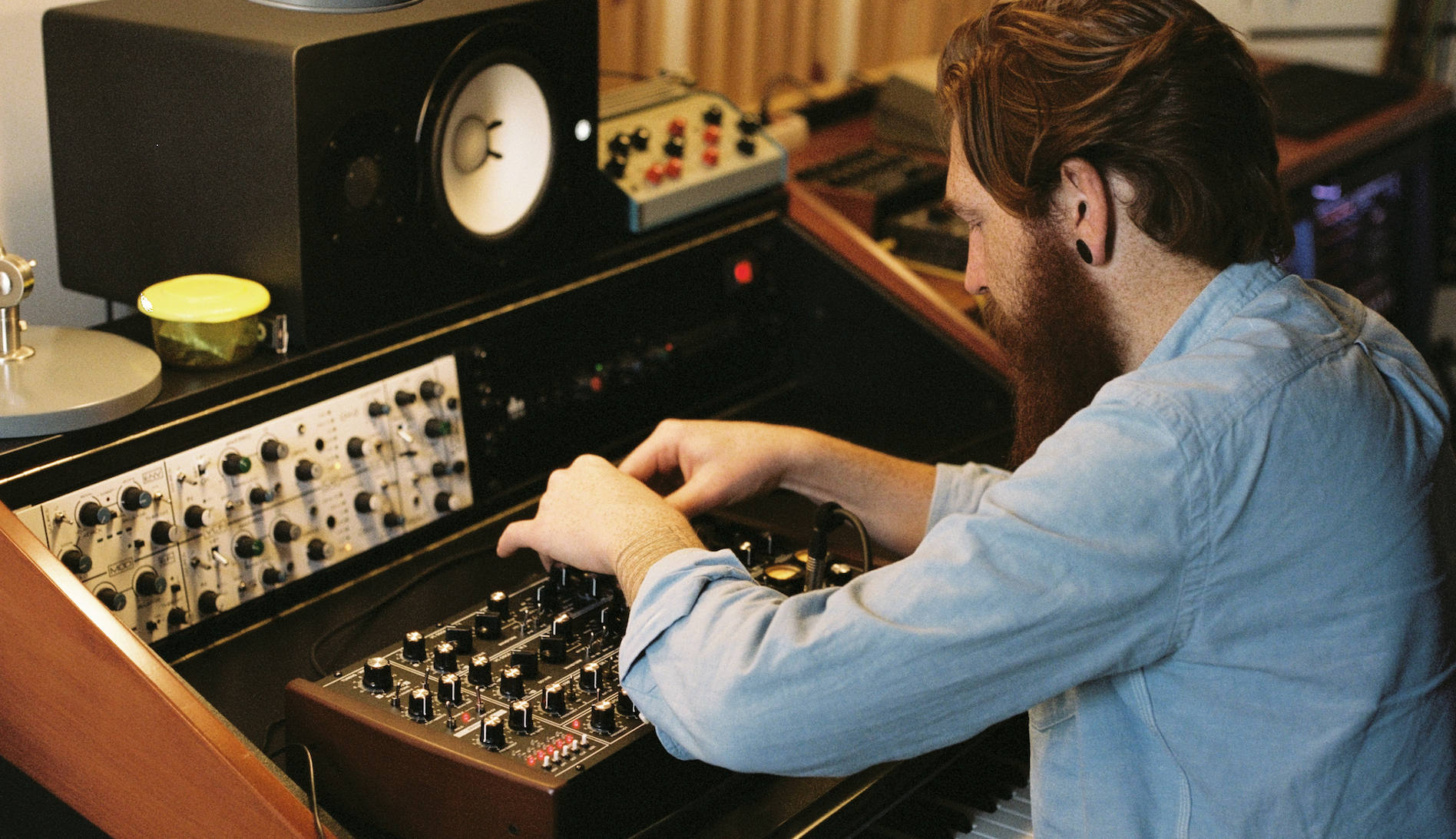
In the Studio: Rødhåd
Mike Bierbach goes deep on the processes behind his debut LP.

Rødhåd is one of the most respected DJs in the global techno scene. The native Berliner has built his reputation over years of playing immersive and dramatic sets at Berghain and around the world. Indeed his own music, as that of his record label and party Dystopian, is distinguished by its powerful darkness and fire. In our previous exchanges, he expressed a desire to complete a full-length and now it’s finally landed, entitled Anxious, a 10-track album out now on Dystopian. To learn more about the processes behind it, Anton Lang headed over to Rødhåd’s gear-heavy Berlin studio.
That October morning in Berlin out east, the fog made the sun a pale circle still climbing in the sky. Down a cobbled street on an industrial lot, a beeping truck reversed from a mechanic’s garage and smoke twisted out of a chimney. There were no other signs of people. The large building of blackened brick appeared and along a wall of posters and graffiti, inside the yard, out of a door came Mike Bierbach—the artist Rødhåd. He was smiling, his copper hair and beard grown long and natural.
Mike had just returned from DJing in Mexico, and in a blue button-down shirt, in slippers, in the wheeled seat at the control console in his studio, surrounded by gear mounted in racks and sunken into panels, warm overhead lamps, and two small windows behind his main monitors letting in cool light, he swept back his hair, ashed his cigarette in a tray, and spoke with eye-contact in his gentle German-accented voice about his music and his processes.
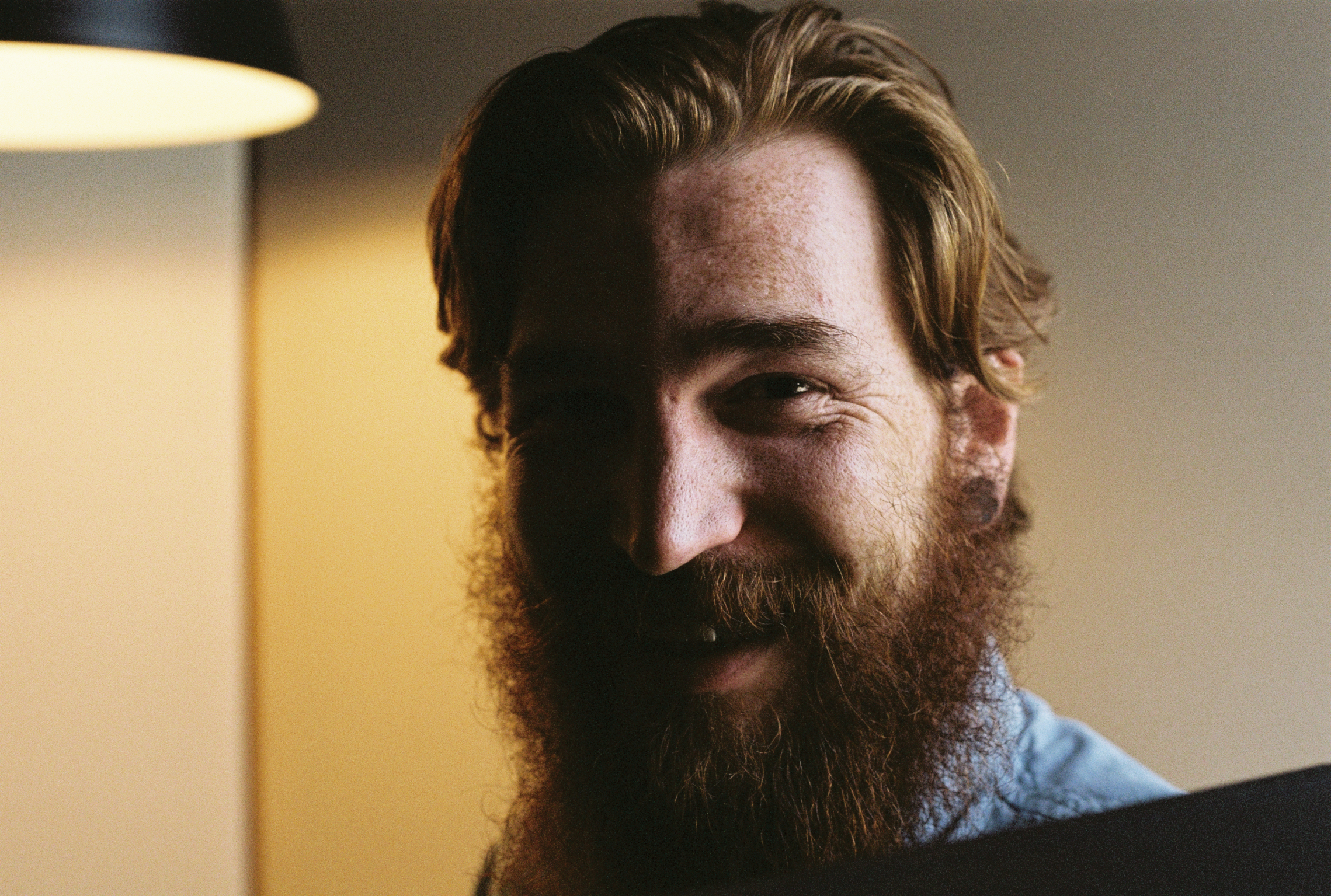
What was the inspiration for the album?
I wanted to make something for an imaginary movie, something cinematic. And I always wanted to work on bigger formats than just EPs; to make something which is more than three or four tracks, to create a vibe, something you can listen to for longer than 20 minutes; and to explore other territories with my music, not only four-four dancefloor techno tracks. An album is the perfect way for me to express myself as an artist.
The name Anxious and the graphics—what is this world?
Anxious reflects what I feel when I see Donald Trump as president, a dictatorship in Turkey, when I see the laws in Germany for surveillance, Google and Facebook collecting your data. It is the time we live in.
My first EP was 1984 and I feel this is becoming more and more reality. And that’s what I’m a bit afraid of. I travel a lot, I see the terror attacks going on, and it’s not that I am on the run, but there is always this feeling in the back of my head that something could happen. And that is promoted by media, a propaganda to keep people in fear, and for installing new rights to watch people.
Is Anxious a safe place from anxiety?
I am trying to make people sensitive to this problem. I don’t say it’s right or wrong and I don’t give them my opinion. I want people to think about it and make their own opinion.
Where do you see your audience experiencing this album?
I wanted to have it working on the dancefloor, in the car, or at home. The perfect place would be in a club, but not in a party.
Is the dancefloor album problematic?
For some people, they can’t or don’t want to do anything else. I can’t understand why you’d put twelve tracks that sound almost the same on an album. You can just make three EPs because there’s no connection with the tracks. And what I wanted to achieve with the album is different styles of music but with a line through them.
Tell me about this studio.
I got the contract last year. I had three studios before not far from here. They were smaller and not so well treated or nice-looking. I spend a lot of time here so I wanted a nice place. I wanted good sound, and I worked with a sound guy. It took us half a year to get to this point, and another three months to reconnect everything. I’m really happy here. When I want to start I open my Ableton—which I use like a multitrack recorder—and I have a preset for all my MIDI channels and all my audio inputs. All the synths are connected, and it works.
You got very excited just now. What are the things you wanted for this place?
Let’s start with my mixer. It’s the Venice F32. It’s also my sound card. All the synths are connected to my patch bay. I have some things hardwired to the mixer; for example always my drums. My mixer’s stereo channels I use pretty much as return channels because of the way I work with effects; I use chains with delays, reverbs, or sometimes feedback loops. That is more or less my effects matrix.
I have two MIDI interfaces, one for each side of the room. It’s usually quite clean but yesterday I cleaned more so you can see my stomp boxes are tidy. Usually, I have them connected to the patch bay. The Lexicon MX400 and the Ensoniq DP4 are hardwired at the moment, but anything I need I easily connect through the patch bay. I also have all the sends and inserts for the group channels on the patch bay so everything is easily patchable.
You acquired a lot of instruments for a time. Do you feel you have what you need now?
I am still looking for extraordinary synthesizers. You see the Elements there. It is a boutique synthesizer. It is expensive and special in the way it works. The Cwejman here is not so common, and difficult to get. Of course, I have simple stuff like the Juno for chords, a bread-and-butter synth. I have the GRP A2, which is really new. There are only two oscillators but there is a lot of possibility for modulation, which is what I’m looking for.
I don’t have any modular synthesizers. The Cwejman is semi-modular. I can patch stuff on there. I like to have one box and not too many possibilities, so I don’t always have to choose which filter or envelope to use. Every synth has a certain sound and feeling. Of course, it isn’t necessary to have this many synths. But I like the creative process of working with hardware.
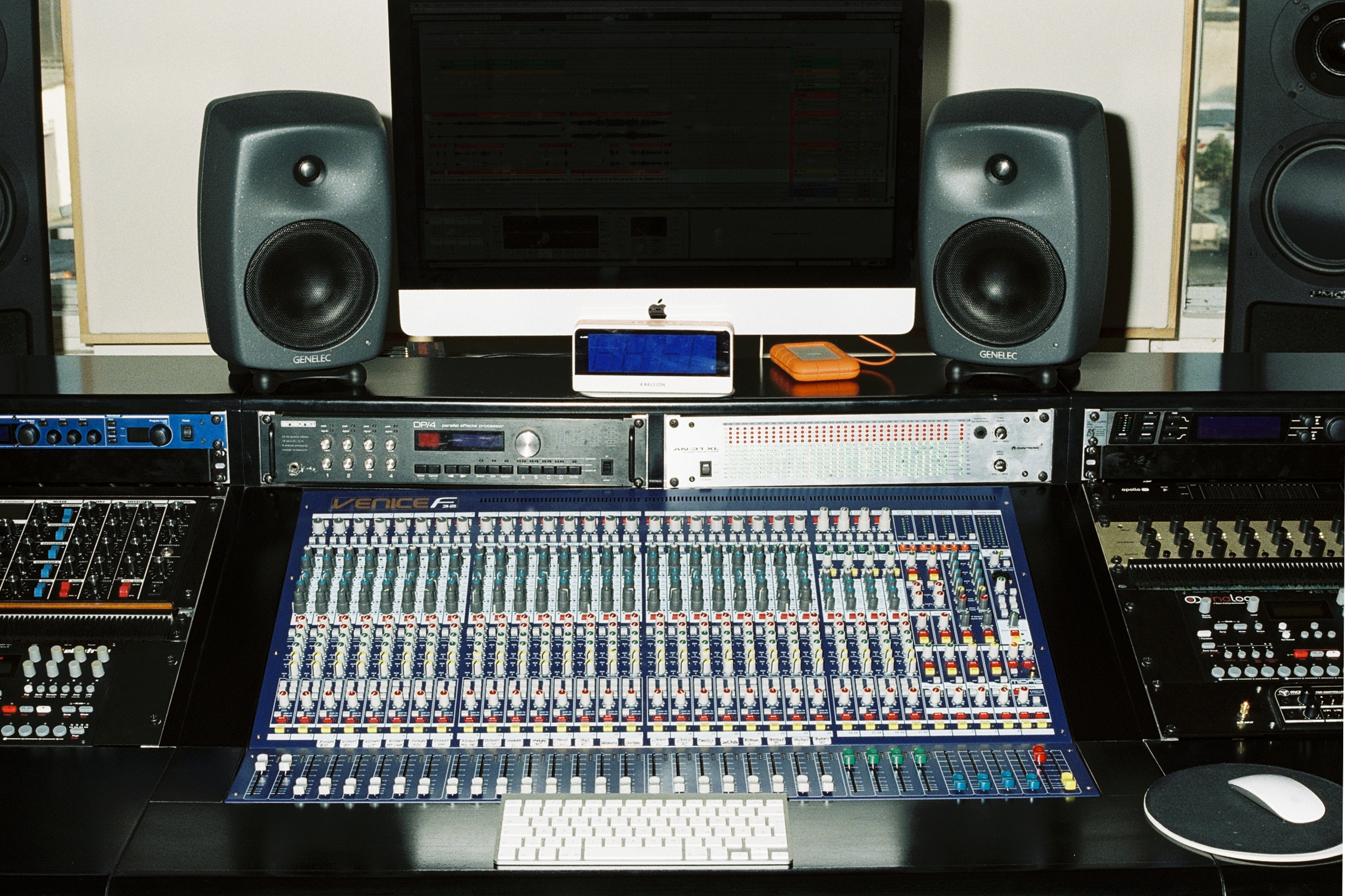
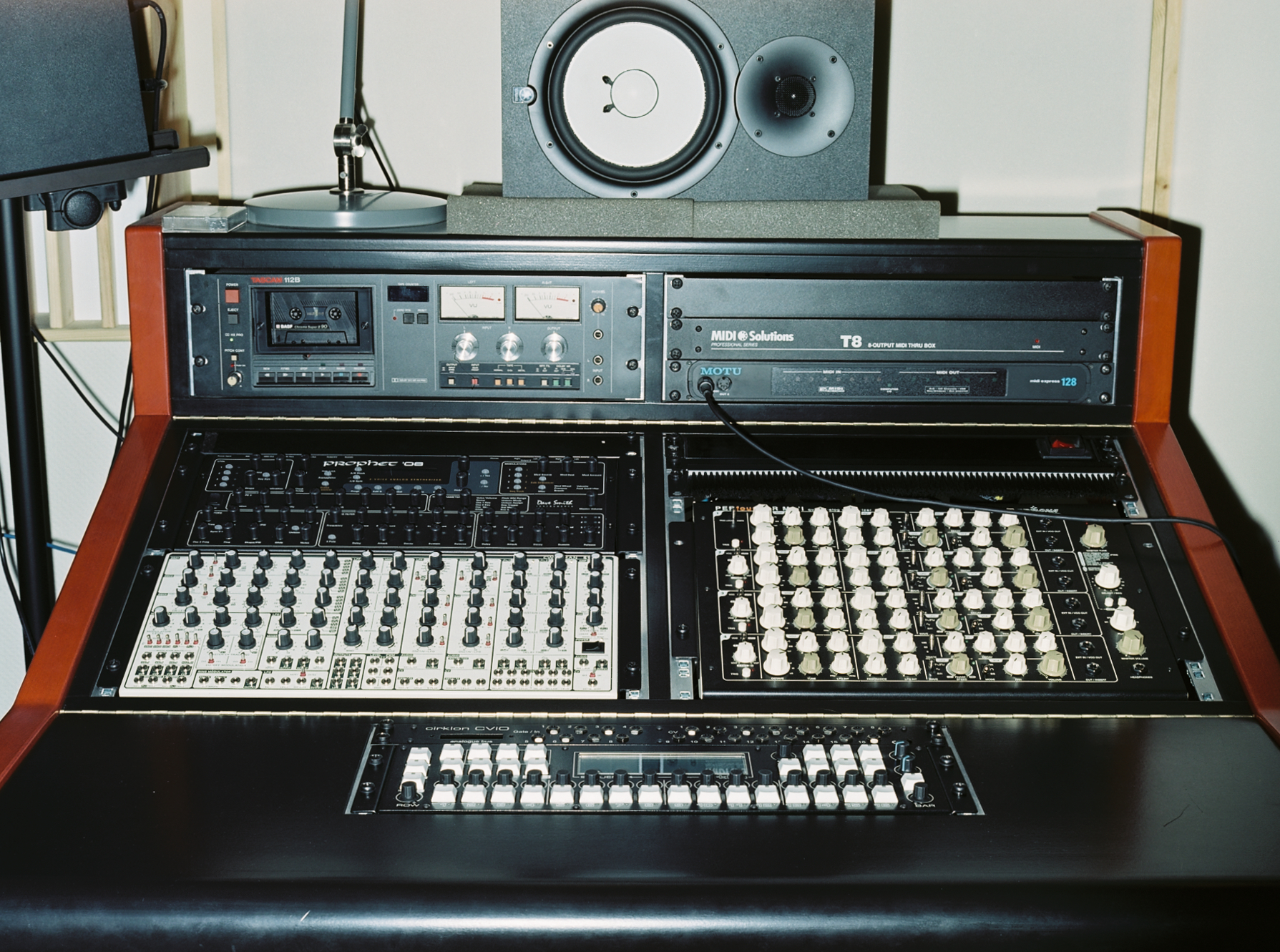
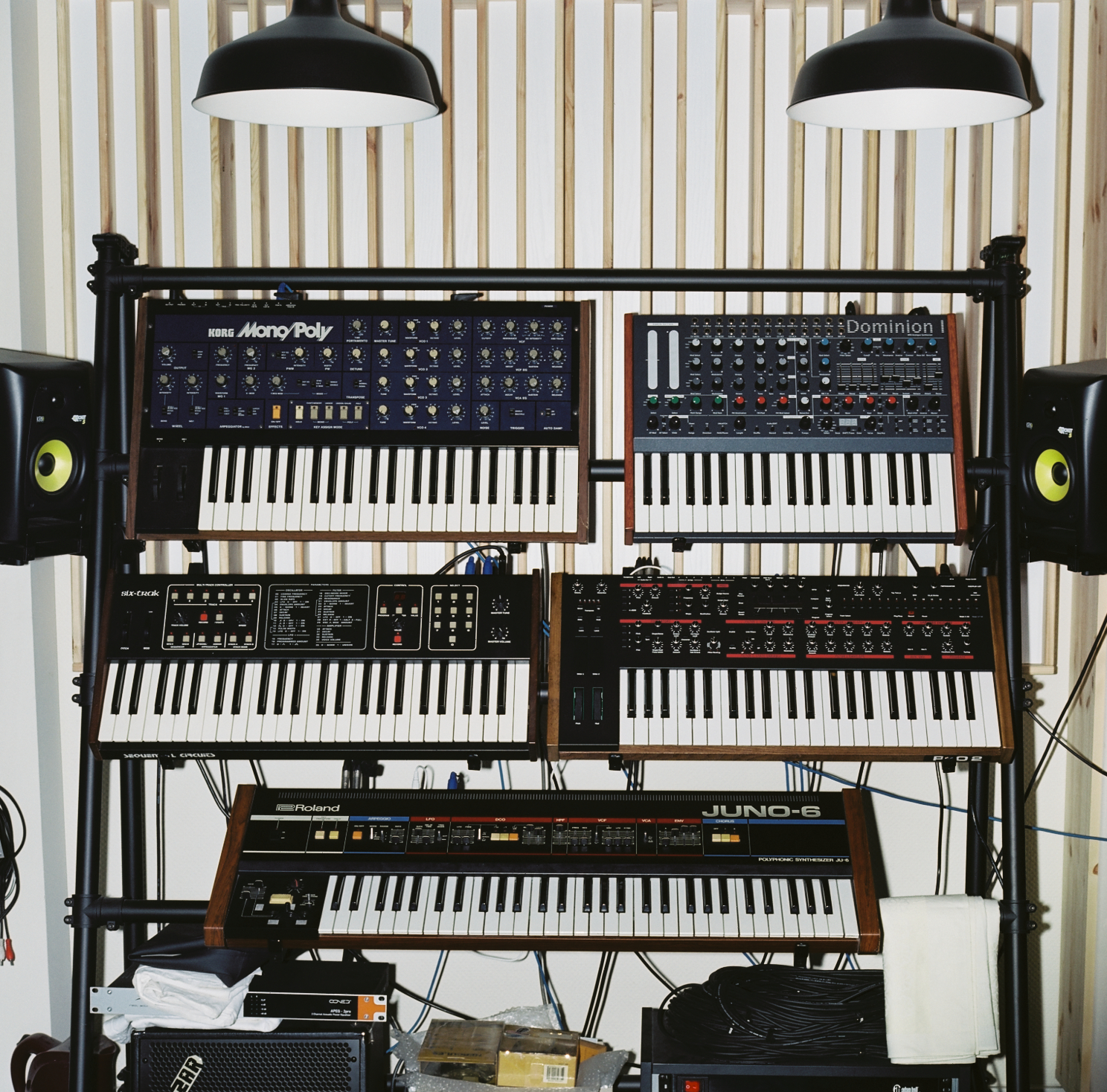
What was the creative process for the album?
I would leave home after my girlfriend went to work at eight o’clock in the morning. The whole album was made in two months. Let me show you my 2017 folder. You can see a lot of material, maybe 30 projects. I just started producing.
Could you talk me through the production of one track?
Yes, I can show you the arrangement for “Escape.” I was a bit crazy on this one.
It’s one of the tracks with the most layers. There are many single tracks even just for the melody. And you see there are eight blue layers at the top just for the kick drum. These came from a template I created. The first channels on my mixer are drum tracks that I’ve fixed connected to my Elektron Rytm drum machine, which is usually my standard drum machine. I have all the single channels split. Some of them are just clicks, some are low-end sine wave on 40Hz for the bottom end, and there’s another kick which is sampled from a drum break I also used on other tracks for the album, which is more a mid-kick with a punch. This is an extreme example but I normally have at least two layers for my kick drum. One which is like a 909 with a punch, and another softer kick with low-end, like an 808 pitched down, which gives you a kind of breathing low-end.
There are three single tracks for the cinematic soundscape, which is already quite dense. I used samples from a movie and put them into the Granulator synth from Robert Henke for Ableton. I like this kind of synthesis and also used this for the remix of “Drone Logic” for Daniel Avery. I exported the vocal track and use it quite often for DJing as an intro or as an effect layer.
The green and yellow tracks in the middle are small samples from the Octatrack for the rhythm. The blue ones are three different hi-hats, and a cymbal, which is more or less a hi-hat. I have a bit of noise here.
When I recorded the clap I had the dry signal and the wet signal from my effects playing at the same time. So one sound has two channels. I do this with all samples. I record the dry sounds from the synth without any effects so I can change them if I want, or mix them with the effected sound for better balance. Sometimes it’s too much reverb for example. Here on the Prophet, you see the original sound and a second layer only with effects. When it all plays it sounds like one thing.
On the kick drums, I don’t have so many effects.
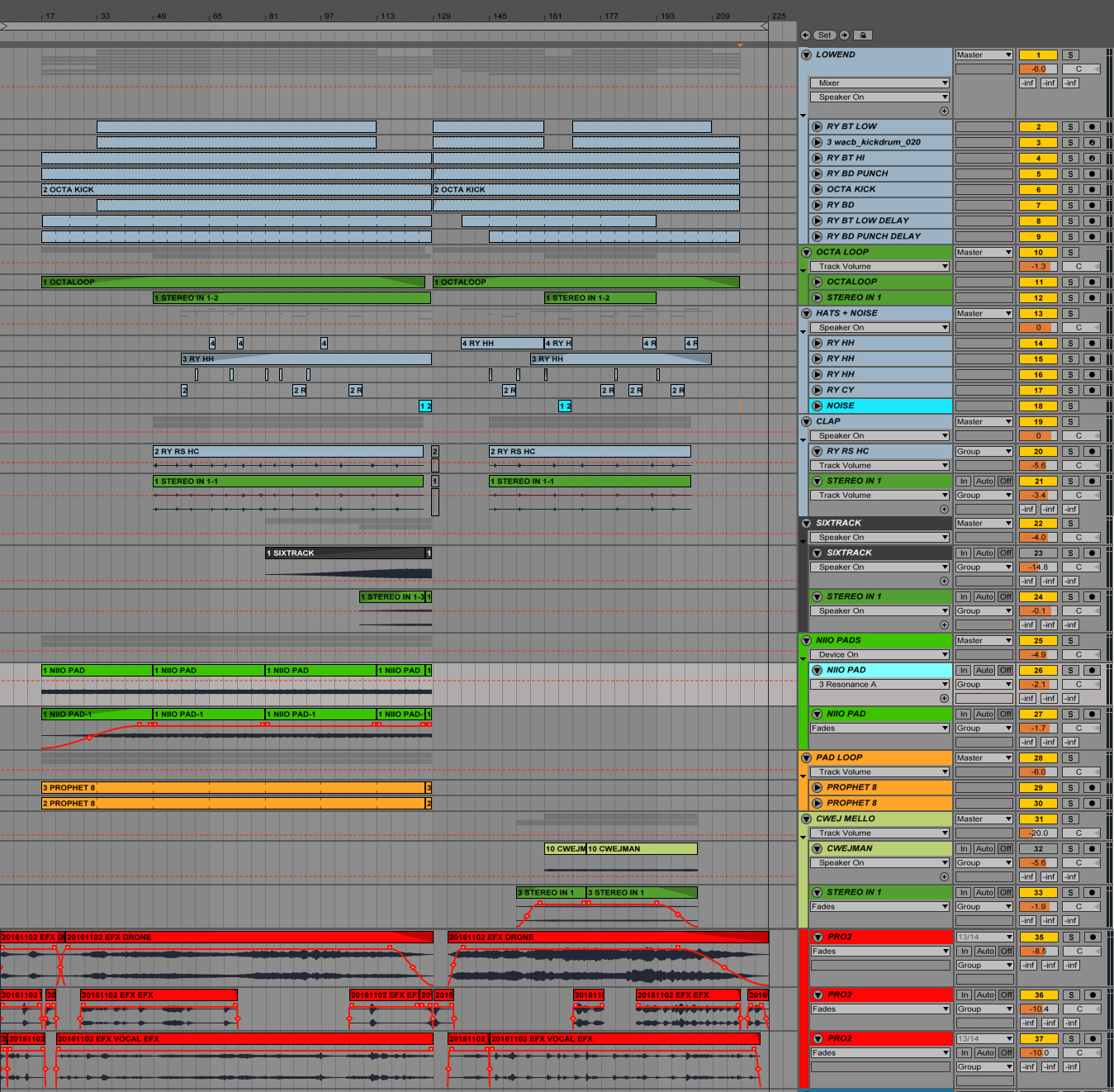
How do you start a track more generally?
It depends on the mood of the day. Sometimes when I come to the studio and don’t have concrete ideas I just start fiddling around. Or if I have a new synth I test what it can do, how it reacts. Or I start making a beat on my drum computer, or program a sequence and make a bassline. Or I start with drones and it’s totally different. I know people who start always with the kick drum. For me, normally the kick is the last thing I add. Because when I have a bassline and all the other stuff happening around it I find it easier to pitch the kick drum to the bassline than the other way round.
Does the unpredictability in your instruments lead to happy accidents?
Yes, for example, the sound from the Elements synth. When I modulate the time of the delay with an LFO and turn on the synth, it makes this weird crackling sound, which is more or less just the feedback from the delay. I used it like dirt on the album a lot.
Do you master yourself?
We always work with the Calyx Mastering studio from Berlin. Conor did the album. He also did mastering for my last EPs. He knows my sound now. We met before and he gave me advice on what I can do better.
The biggest problem for me is that my low-end is heavy in the mix. On many of the tracks, the kicks didn’t really get through the bass. That’s why in “Escape” I have these clicks to cut through, and I side-chained the kicks to duck the other low-end. But overall my raw mixes were quite good already.
And actually, I realized my mix-down is more important than the mastering, which is maybe the last twenty percent. When I did my first EP, I thought after the mastering everything will sound crispy and crazy, but the intention of mastering is not to change the original sound. They remove the stuff which is not cuttable into a record, like the low frequencies, limit a bit, and prepare the audio for digital or analog format.
What needs work in your technique?
Sometimes I realize I use too many effects or they are too loud in the mix. After the mastering when you compress, the effects come out more. And sometimes I try to put too many elements into the tracks. On “Escape” you hear there is a lot of stuff happening and sometimes it’s maybe too much. I force myself to reduce.
The arrangement is always difficult. I start with one instrument, perhaps thirty minutes of recording, but sometimes I force myself to record only seven minutes as I think the sound should evolve in the track. Sometimes it’s fast and sometimes I struggle. Some of my producer friends find arrangement easy, but I am always a bit…anxious.
Did you edit “Escape”?
This one I didn’t edit so much, but the breakdown was problematic. The track becomes so dense and full, and suddenly it all goes away. I didn’t know what to do after. In the end, I took the same standing-pad melody from the beginning and brought it back in a different way.
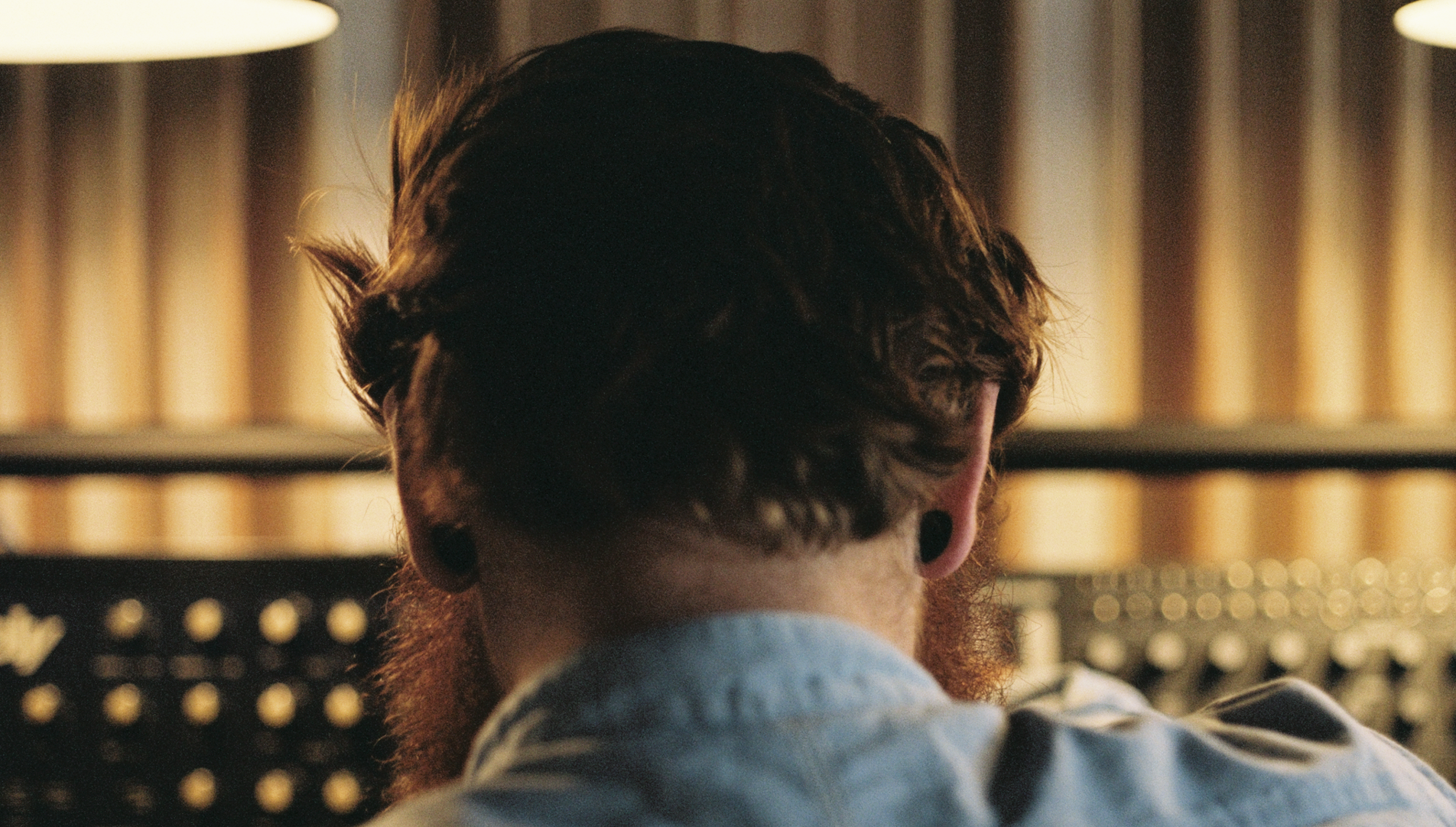
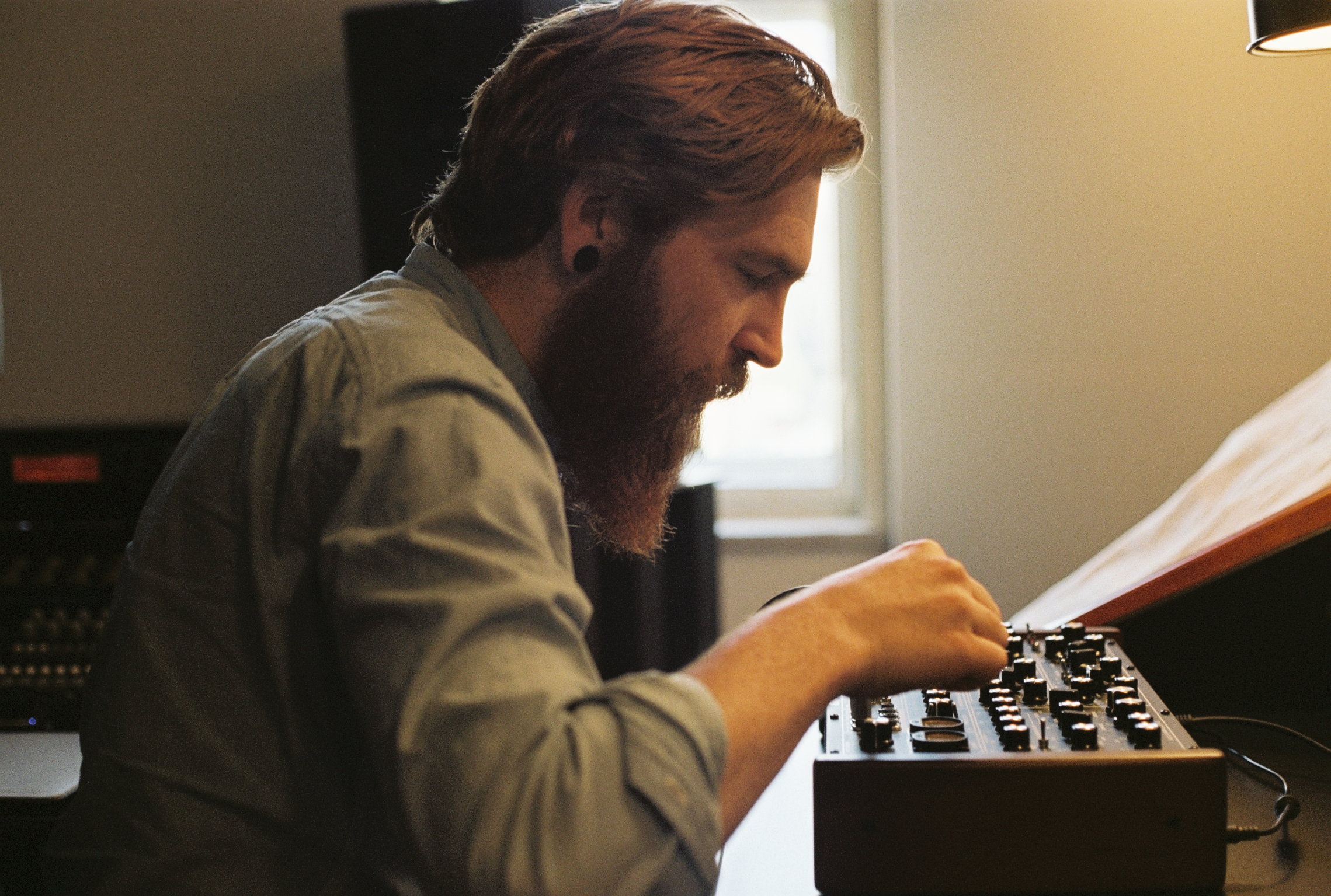
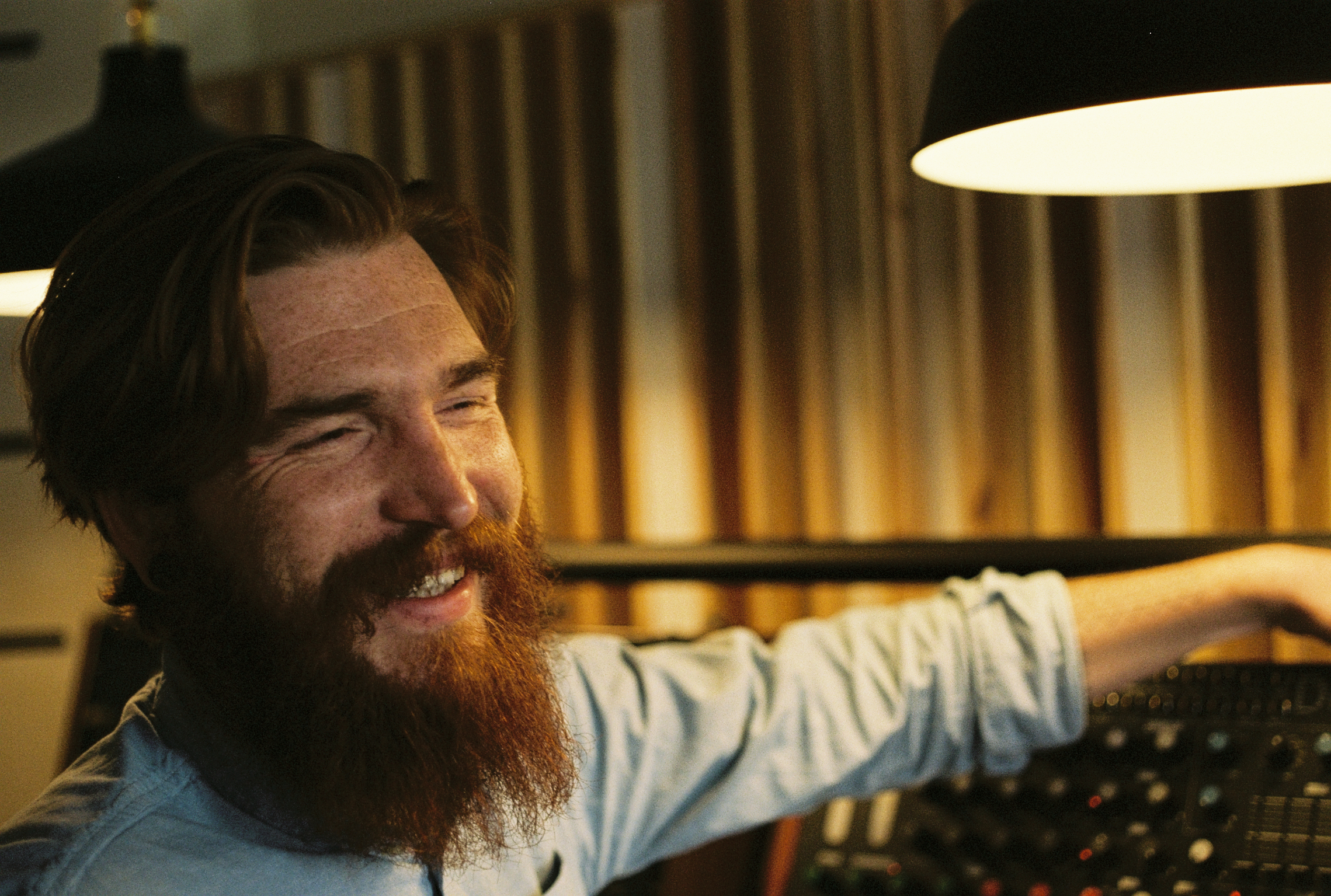
How did you know when this was finished? Did you play it to other people?
That’s often a problem for me. Often I show tracks to people and they think it’s finished. But there’s always something I want to change. It’s hard to say finished. During the process, you hear it so often you lose perspective. So I try to make the whole process quite fast to capture my idea and not get tired of the track. Sometimes it can just be one day to have a track finished and then it’s technical things like EQing and cutting things I don’t need.
What production skill are you proud of?
I would say atmospheres. The most fun part of the studio for me is sound design. Most of my synths can’t save sounds. So I create a sound and record it and then it’s gone. It can take time to find the sound but when I have a sound in mind I know how to get there.
How did the collaboration with Vril on “Target Line” come about?
I know him for a while now and we often play at the same events. We wanted to see what would happen in the studio. He was in Berlin and we made like seven tracks in a week. It wasn’t an idea to use anything for my album, but “Target Line” stood out. Together in the studio we found ideas quickly and finished tracks. Vril uses some of the same equipment, like the Juno, so he was comfortable here. With two people it was easy to decide if what we were making was good or not. We only had a few days so we didn’t mess around and lose time.
And you always have the clock in front here?
I am not looking at it all the time, but it keeps me not forgetting my girlfriend!
Is there a sense of a DJ set in the album?
Yes, it’s a little bit like I am trying to do my DJ sets in a really short term. But it is quite classical: you have the beginning with the tension, a little gap where you can rest, then you go forward and find your peak, then down again. A little like a theatre piece.
What about the cover graphics?
The idea was to be somehow on the cover. But it’s not me. I do not come to the studio in make-up and I do not play live in make-up. It is a character.
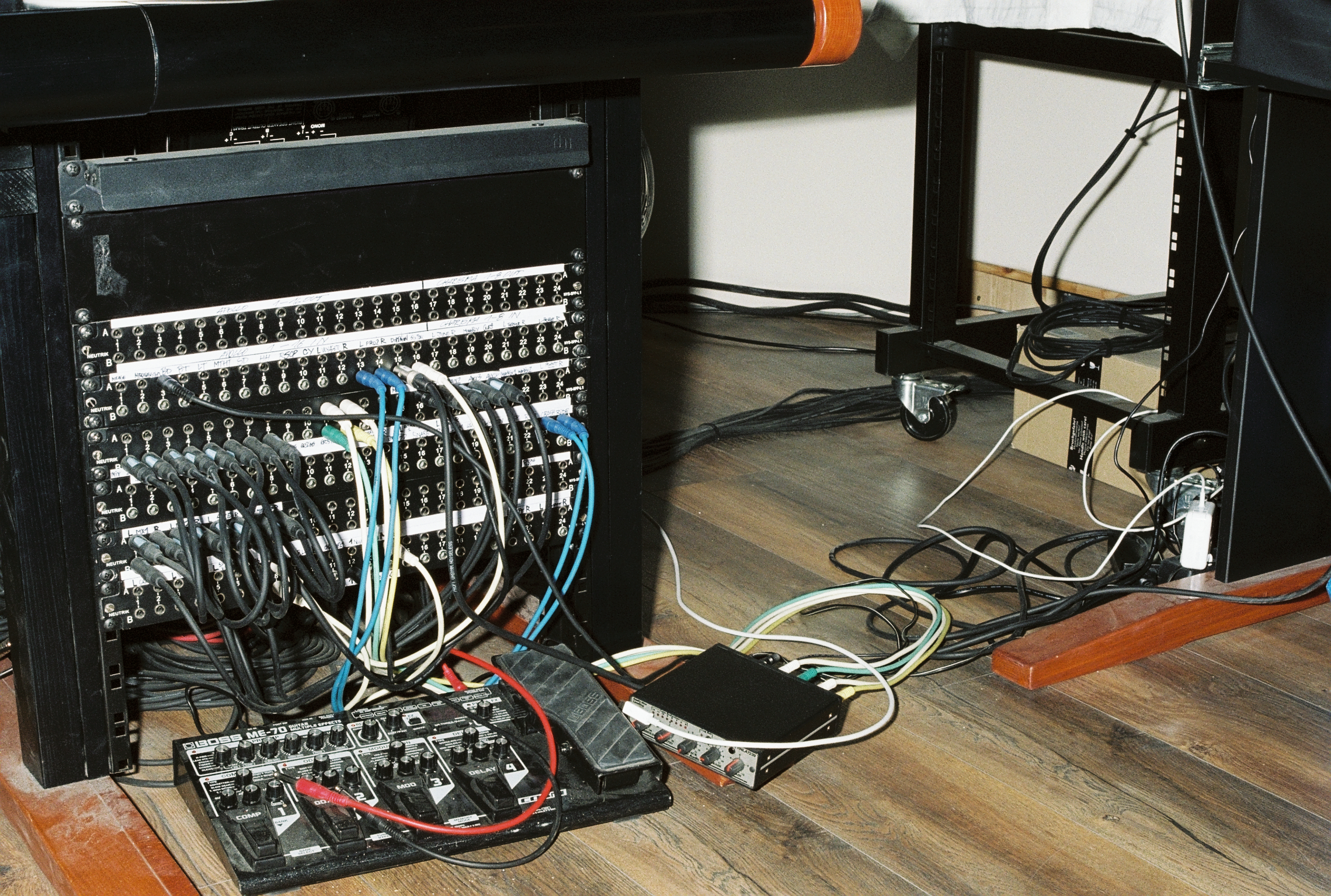
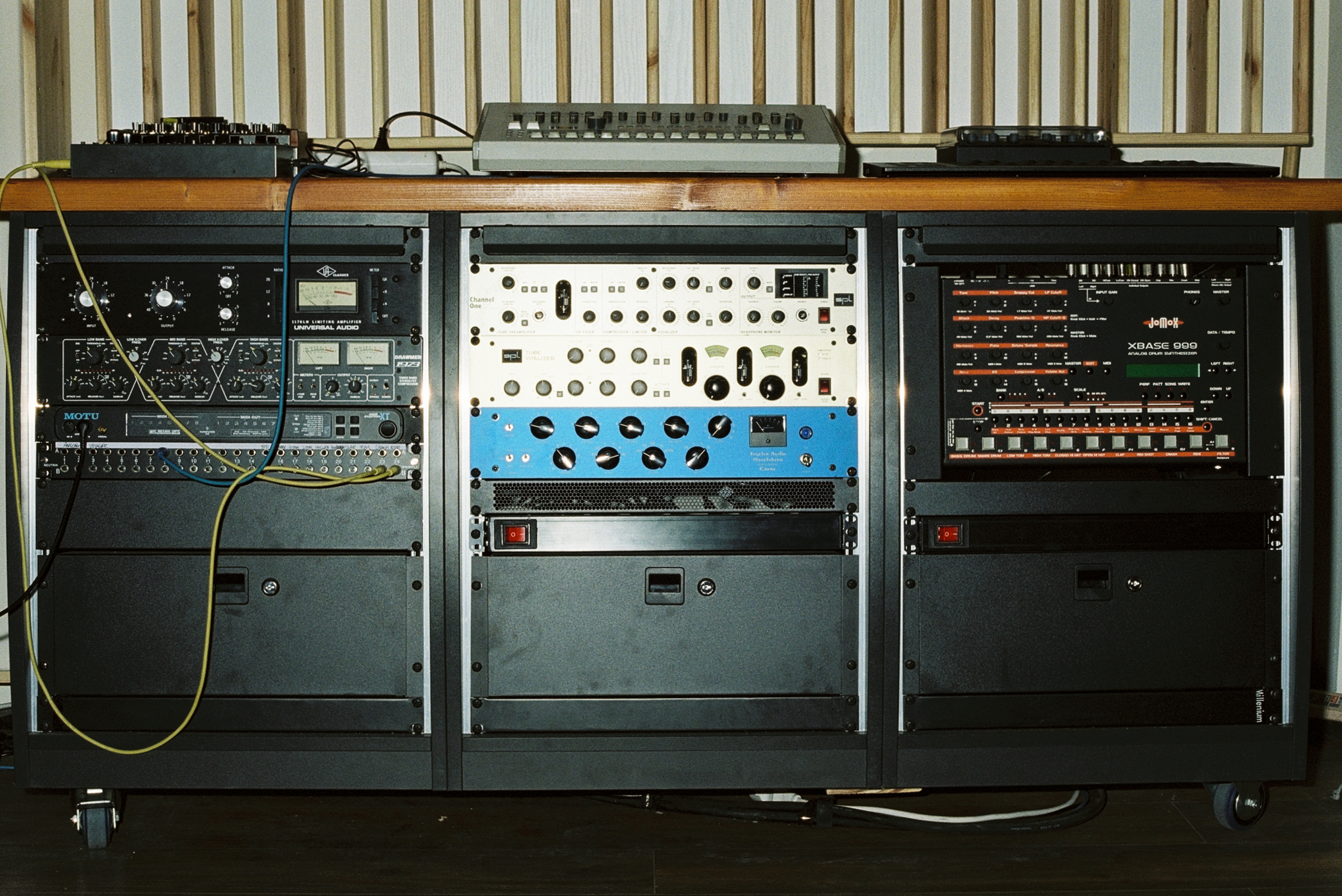
And do you plan a live performance?
I want to do the live show, but I don’t know how. The way I work in the studio, it’s not possible for for me to do everything alone on a stage and live. There are a lot of layers in my projects; I start and I add and add, and in the end there are like 30 tracks. I have to find a way.
The studio with small windows, the nightclub with no windows, airplanes, etc. Do you also need nature?
Yes, it’s also inspiring. But I was born in Berlin and always lived here. I am not the nature guy as, for example, Recondite. He needs his woods, needs to be outside. For me, it’s not necessary, but when I get the chance I appreciate it.
Yes, you don’t seem anxious.
People are always surprised when they meet me. I have this label Dystopian and make dark music, but I am a happy person. I’m in this lucky position. I can do what I want to do. I get paid for my passion, for playing music for other people, for dragging them for a time into my world. How could it be better?
But you see my schedule. I am often on the road, and it was hard work to get here. I didn’t do anything else than music from Monday until Sunday.
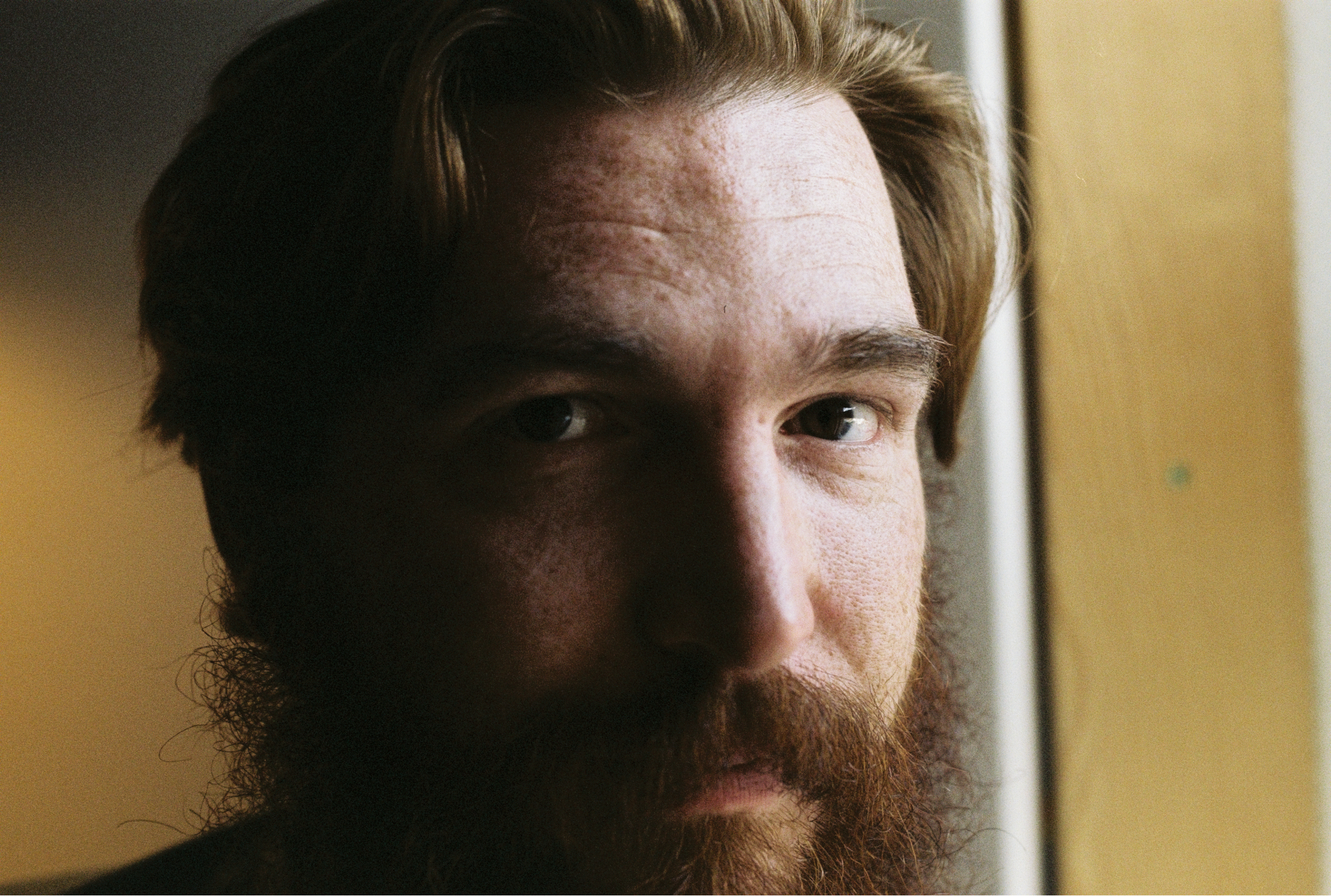
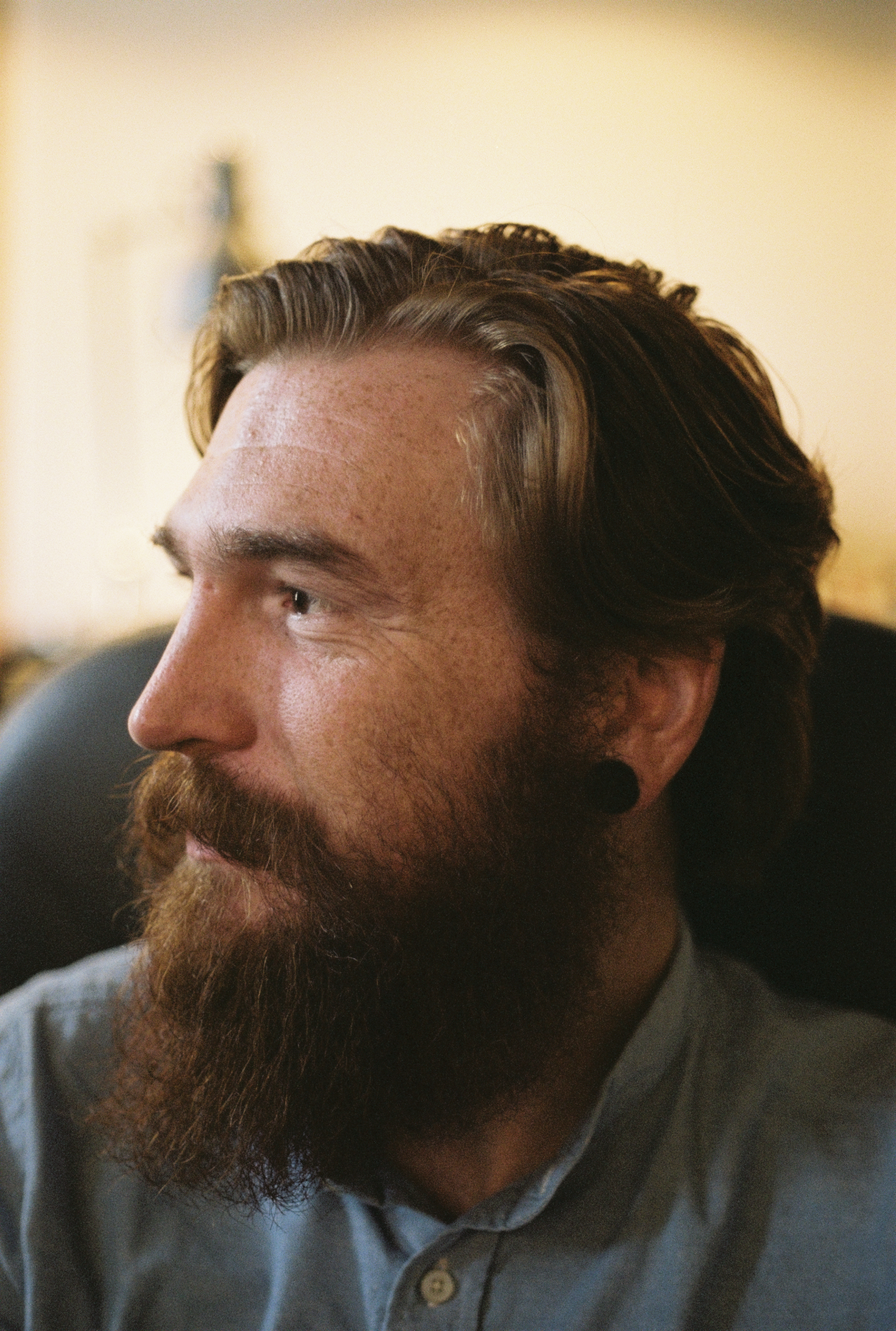
Can you continue making music until you die?
As a musician and DJ, the problem is I am always in loud environments. The guys who have been doing this for twenty-five years, they all have problems with their ears, they don’t hear certain frequencies. My ears are still good. But I still have a lot to learn in the studio. And I’m looking forward to progress, to getting deeper into the material.
What does techno mean to you?
It’s technology, it’s freedom, losing myself, and giving my dancers an escape from reality. When I was younger it was important after five days of school or work—on the weekend I go to techno. I get lost in sound, the repeating rhythm over hours sends me into a trance, and I don’t think about the shit happening around me. It’s such a big thing; it’s not easy to capture in a sentence.
Mike exhaled smoke and laid the cigarette on its tray. He wheeled back in his chair and pulled out a drawer with a keyboard and began working the synth on the console. The first squawks and bleeps rang from the great PMC monitors atop welded iron stands. Turn by turn the signals grew longer, and their shapes like a lizard’s back with spines curled, distorted, and were carved into a soundscape. The whistles gone, the low-end defined. Mike rolled back to his mixer and drew up several faders and beating drums and percussion entered the studio air. The talk had ended but Bierbach had just started.

